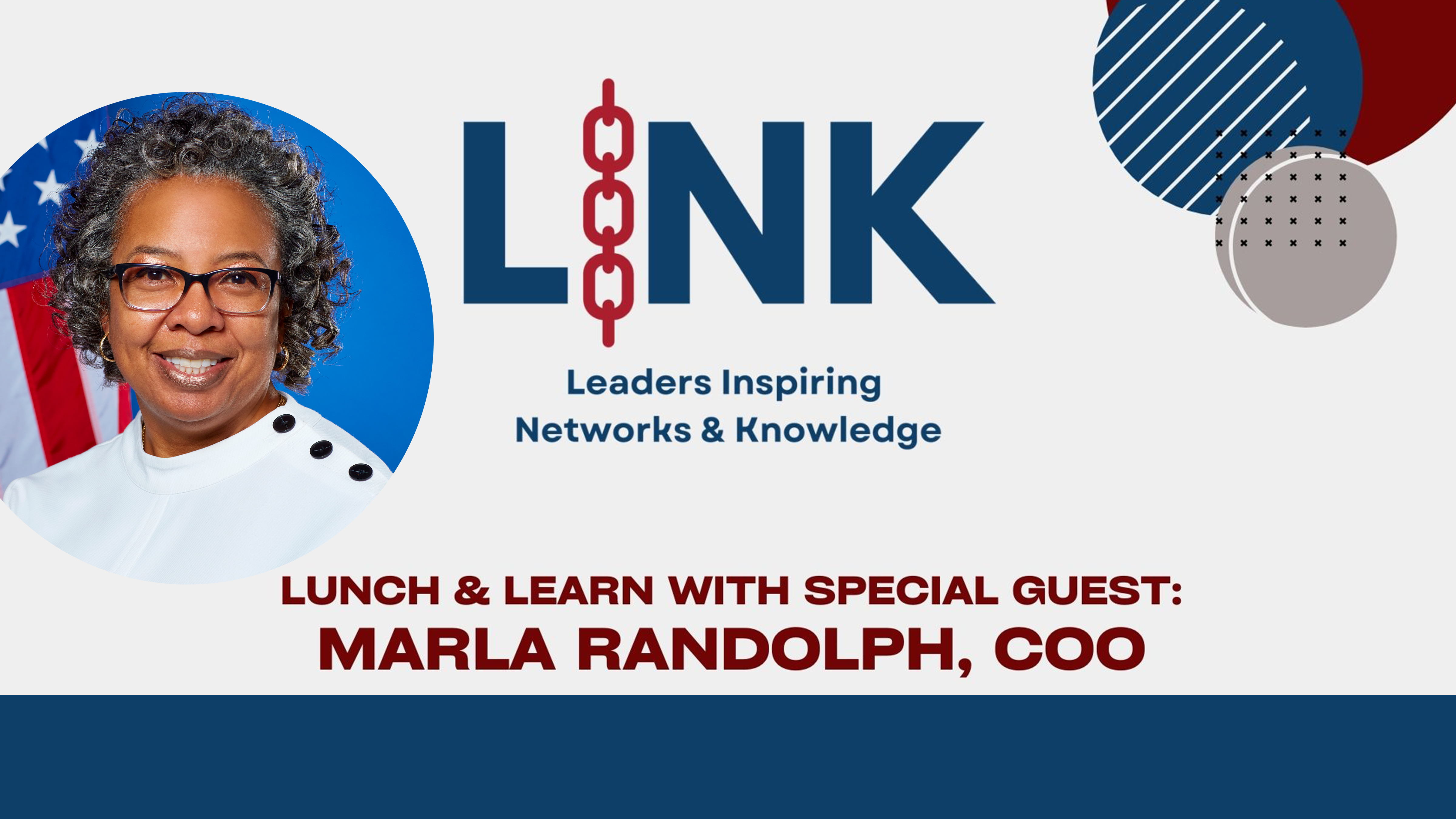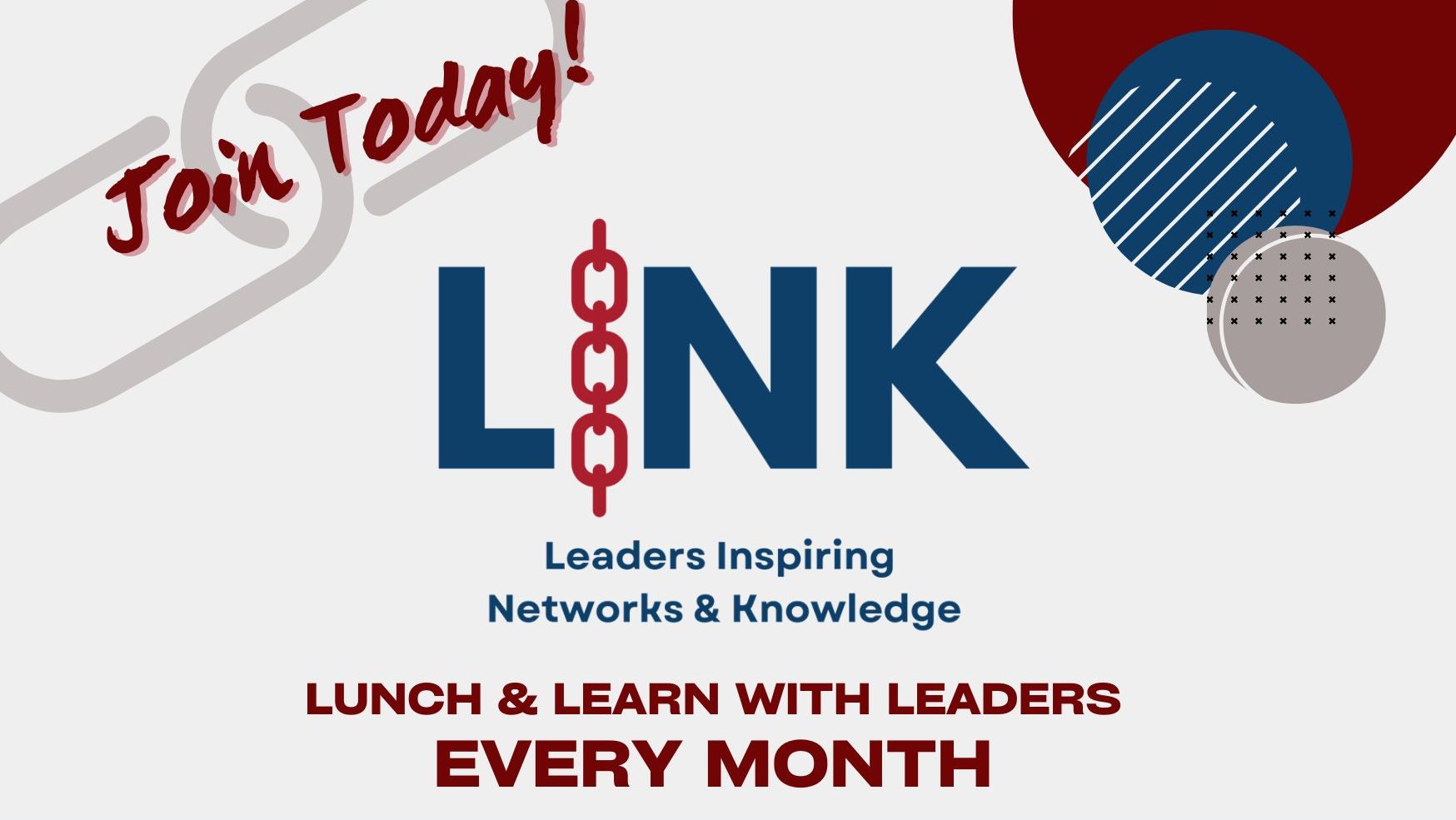One day when she was young, Exchange Chief Operating Officer/EVP Marla Randolph was riding in her grandmother’s car when she saw her mother—working atop a telephone pole.
“And I was like what? What’s she doing up there?” Randolph told an audience of more than 350 on May 28 during the Exchange’s first LINK Lunch & Learn With Leaders. “But at that moment, I realized that she could climb a pole.”
Randolph’s mother was, in fact, the first woman to climb telephone poles in their town, repairing phone lines in the days when landlines were dominant. “It was the biggest thing ever for me to see, and her being the first woman to climb a pole was a big deal, because back then, it was a man’s world,” Randolph said.
But this was just the latest thing that Randolph realized about her.
“I was inspired by my mother, and she was a role model to me,” Randolph said. “When I saw my mom, I thought I could do anything. She was a single parent of three, and I looked at her like she was the tallest woman in the room—not literally tall, but she would always have the answer. She always knew what to do, just like most of our moms.”
Randolph’s stories about her mother and the inspiration she provided were part of a talk on “Why I Lead”—in keeping with the theme of the inaugural LINK (Leaders Inspiring Networks & Knowledge) session, “Discovering Our Why: Fueling Purpose Through Connection.”
Randolph said that she prepared for the session by researching what a leader is. “Because we all hear that there are leaders and there are managers,” she said. “But what’s the difference? When I was researching, I found that a leader is someone who influences, guides or directs toward achieving a common goal.
“It’s not about the title—it’s about actions, character and impact,” she continued. “A leader helps people do more, become more and achieve more.”
Education was also important to the young Randolph, who was such a strong student that when she received her first B, in eighth grade, her mother—used to bragging about her grades—did not react well. “I’m 50-plus now, and I still remember the time she went off about that,” Randolph said. “I was traumatized. However, trauma, too, can help you become a leader.”
During high school, Randolph found ways to stand out academically—but also ways to fit in socially. When she entered college, she found that she no longer stood out—so, as a freshman, she decided to run for office. She didn’t have the money for campaign materials such as posters, so she went to an art class and asked for help with graphics. A student drew a picture of her for a poster placed in the University Commons.
“You know what I looked like?” she asked the LINK audience. “The Joker. People would come up to me and say, ‘Is that you?’ But it worked. I won. It was freshman year and I was back to standing out again. I figured out that I can do this regardless of where I am. I’m somebody who’s going to be different. I kept that drive and it’s worked for me.”
That drive also includes purpose and mission.
“That’s when you feel like you’re called to solve problems or leaving a legacy of serving others or whatever the case may be,” she said. “My purpose and mission are about service, transcendence and surrendering.”
Transcendence, she said, is about putting others ahead of yourself. “It’s not about you,” she said. “You’ve got to step back and say, ‘How do I help others?’ A true leader always considers other people.”
Randolph also spoke of having an impact on others and influencing them—at home with your family, on the job with your work family or in the community. “You have to act and do what right looks like,” she said. “You have to make sure your audio matches your video.”
In summing up her “why,” Randolph said she became a leader because she wants to make an impact beyond her work; because she cares about others; and she believes in serving.
“I always want to be part of a solution,” she said. “I want to inspire others to believe and to take action. I want you to know that all things are possible. Wait for no one. Do it yourselves.”
Randolph wasn’t the only senior leader who spoke during the first LINK. In his introduction, EVP/Chief Human Resources Officer Dr. Patrick Oldenburgh Jr. talked about his own “why”—which happened when he deployed after the 9/11 attacks.
“I got on an American Airlines flight with 400 Marines, and these Marines all looked like they were kids,” he said. “Their youth was absolutely shocking to me. I was deployed for about a year, and it really, truly taught me why the Exchange exists. It taught me about what we really do, our richness and our goodness and who we are.”
Randolph’s talk was followed by a video featuring a dozen vice presidents, managers and directors talking about why they are proud to lead at the Exchange.
And every member of the 350-plus audience got a chance to speak, when they were sent to digital “rooms” with three or four other associates to discuss their own “whys”—why they came to the Exchange, why they stay and how their “why” affects how they do their jobs every day.
LINK is an initiative that aims to strengthen workplace culture, boost morale and reinforce the value of connection. Each month, a senior leader will host a session via Teams aligned to key business priorities. These meetings will go beyond presentations, offering candid discussions with leaders sharing insights, personal stories, challenges they’ve overcome and lessons learned. The sessions are designed to inspire, encourage growth and offer actionable takeaways.
The sessions are open to all associates. For more information, associates can contact CorporateLearning@aafes.com or join the Exchange LINK Team channel on Microsoft Teams.
Active associates who missed the LINK presentation can watch it here.




Leave a Reply